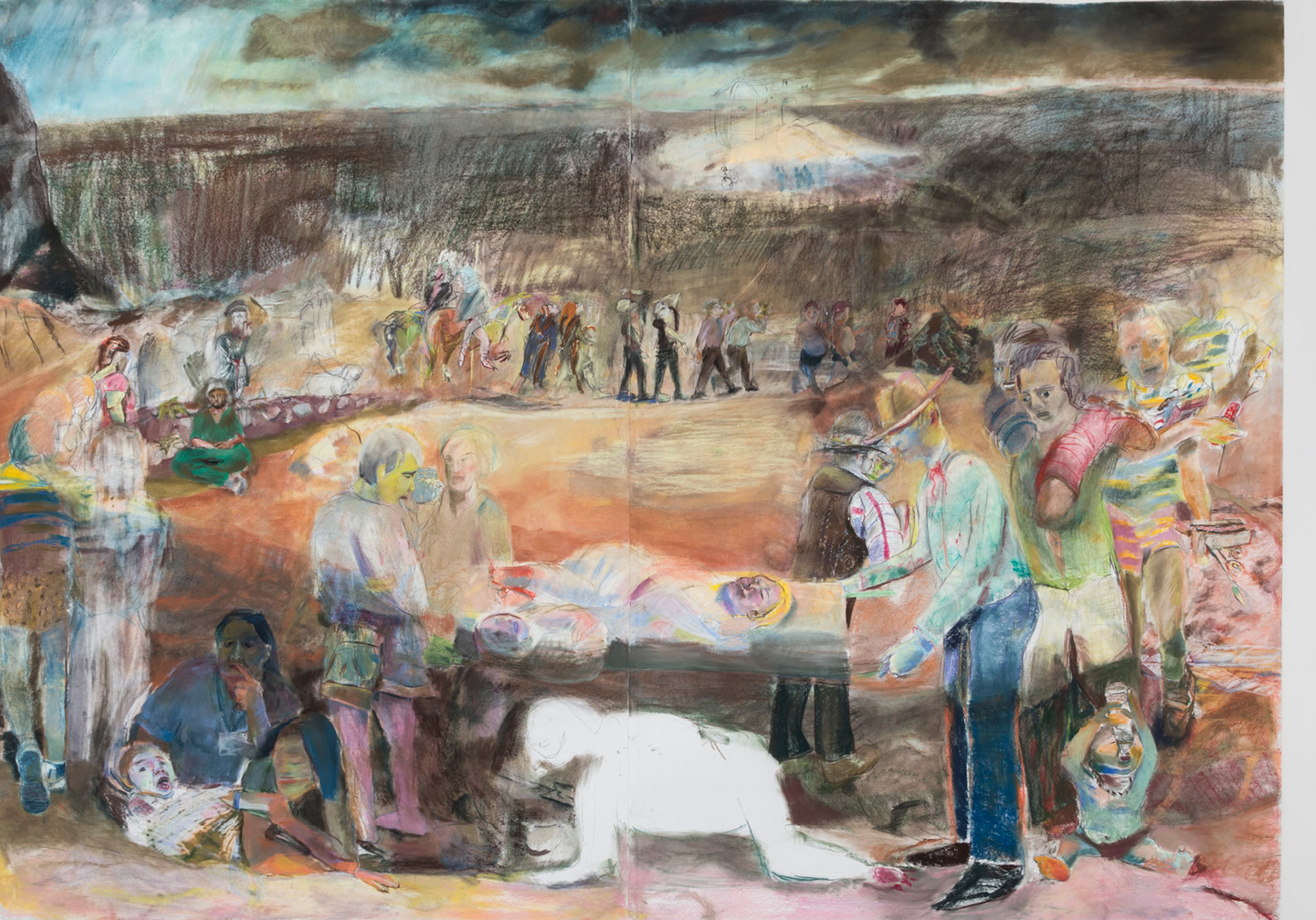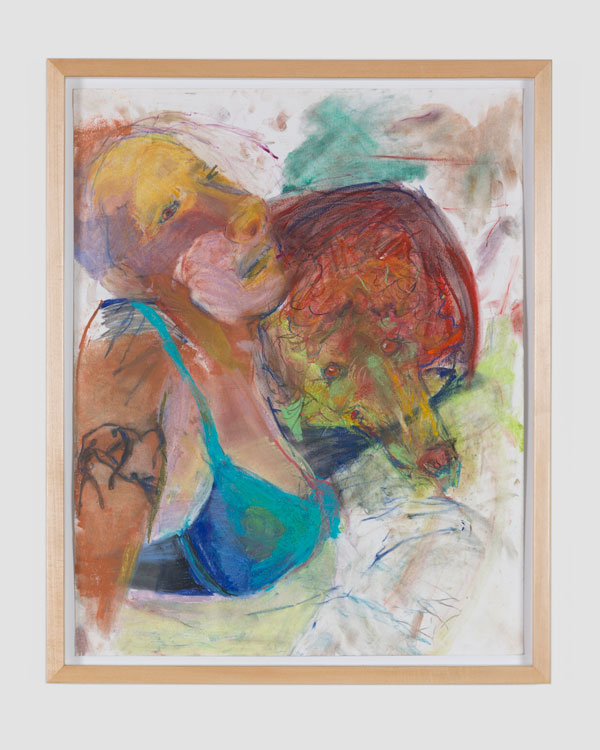The art collective En Plein Error, comprised of artists Jenny Gagalka, Beaux Mendes and William Wasserman, practices a kind of extemporaneous riffing to create their pastel on paper works, in a process that might be loosely compared to a session of exquisite corpse, except the trio makes their marks contemporaneously, with an orchestration and awareness of each other’s engagement with the paper/medium. The drawings in this exhibition take their cues from art historical works, signaling that there is more going on here than improvisation, and one can make inferences from the diverse influences, and at the same time deduce intention. The Opening (all works 2018), evokes Renior’s Luncheon of the Boating Party (1880-81), but tosses in a dose of German expressionism, with faces that range in color from a vaguely corpselike yellowish-green worthy of George Grosz, to a boldly lavender/crimson/orange reminiscent of Emil Nolde or Ernst Ludwig Kirchner.
The three artists arrange short residencies/retreats that are the working studio sessions in which the collective generates their drawings. These must be as intensive as one imagines they are giddy. Holed up in a hotel room for a 36-hour stint, the immersive nature of the experience geared toward breaking down individual preferences and finding a collective voice, yields results that on one hand are vital—witness the wisp of a stray asparagus spear on the hors d’oeuvres table—and on the other, carry a provisional, almost preparatory quality.
The ambitious Noah’s Ark conveys both the compositional strategies and the immediacy of their process, depicting a Boschian procession that winds from foreground through the middle and into the deep vista of the picture, where a skeletal ark is sketched in a luminescent circle that somehow escapes the gloom of darkly foreboding storm clouds. Figures are both unfinished and obscured creating tension between pictorial voids and a palimpsest-like sequence of rewriting.
Paired with En Plein Error’s unvarnished expressionism merged with a certain conceptual structural conceit, is Brian Kennon’s “Pages (Bonin, Buren, Benedict),” a collection of nine modest collages, in which he juxtaposes side by side images taken from art books. The sobriety with which Kennon goes about his work, and the material simplicity and restraint of the objects, plays in stark contrast to En Plein Error. Kennon’s work is generated through his research and mining of libraries, or the art historical archive. Each work in the exhibition is some combination of images of the work of artists Daniel Buren, Cosima von Bonin or Will Benedict. Much like an art history slide lecture, images are presented for examination and comparison. But their removal from the book and the library shifts the frame of reference. These concurrent exhibits reflect different modes of interacting with art historical knowledge, but in both Kennon’s work, and that of En Plein Error, ideas of authorship are reexamined and art historical references are detached from their original fields, allowing something new to emerge.



